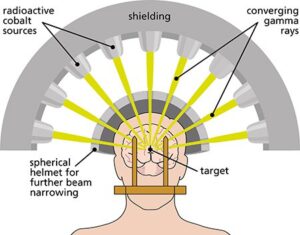Introduction
Stereotactic surgery is a minimally invasive surgical technique that uses advanced imaging technology and computer-guided systems to precisely target specific areas within the body, typically the brain. It allows surgeons to perform highly accurate procedures with minimal damage to surrounding healthy tissue. Stereotactic surgery can be used for both diagnostic and therapeutic purposes, and it has revolutionized the field of neurosurgery.

How Stereotactic Surgery Works
Stereotactic surgery involves the use of three-dimensional coordinates to precisely locate and target a specific area within the body. The procedure typically follows these steps:
Imaging and Planning: High-resolution imaging techniques such as MRI, CT scan, or angiography are used to create detailed images of the target area. These images are then imported into a computer system, which allows the surgeon to create a three-dimensional map of the area and plan the surgical approach.
Frame or Frameless System: A stereotactic frame may be used to provide a stable reference point during the procedure. Alternatively, a frameless system may be employed, where imaging technology and anatomical landmarks are used to guide the surgery without a physical frame.
Navigation and Targeting: During the surgery, the surgeon uses the preoperative imaging data, coupled with real-time imaging techniques such as intraoperative MRI or CT scans, to precisely navigate to the target area. This is achieved by following the coordinates and using specialized instruments.
Procedure Execution: Once the target area is reached, the surgeon can perform various procedures, such as tumor biopsy, lesion removal, deep brain stimulation electrode placement, radiofrequency ablation, or laser interstitial thermal therapy, depending on the specific condition being treated.
Postoperative Care: After the procedure, patients are closely monitored in the recovery area, and appropriate postoperative care is provided based on the specific procedure performed.
When Stereotactic Surgery is needed
Stereotactic surgery may be used in a variety of medical scenarios, including:
Brain Tumors: Stereotactic techniques can aid in the precise removal or biopsy of brain tumors, while minimizing damage to healthy surrounding tissue.
Functional Neurosurgery: Conditions such as Parkinson’s disease, essential tremor, epilepsy, and obsessive-compulsive disorder may be treated using stereotactic procedures like deep brain stimulation (DBS) or radiofrequency ablation.
Radiosurgery: Stereotactic radiosurgery, such as Gamma Knife or CyberKnife, delivers precise radiation therapy to treat tumors, vascular malformations, or certain neurological conditions.
Biopsies: Stereotactic guidance allows for accurate sampling of tissue in cases where a diagnosis is required, such as in suspected brain infections or certain neurodegenerative disorders.







